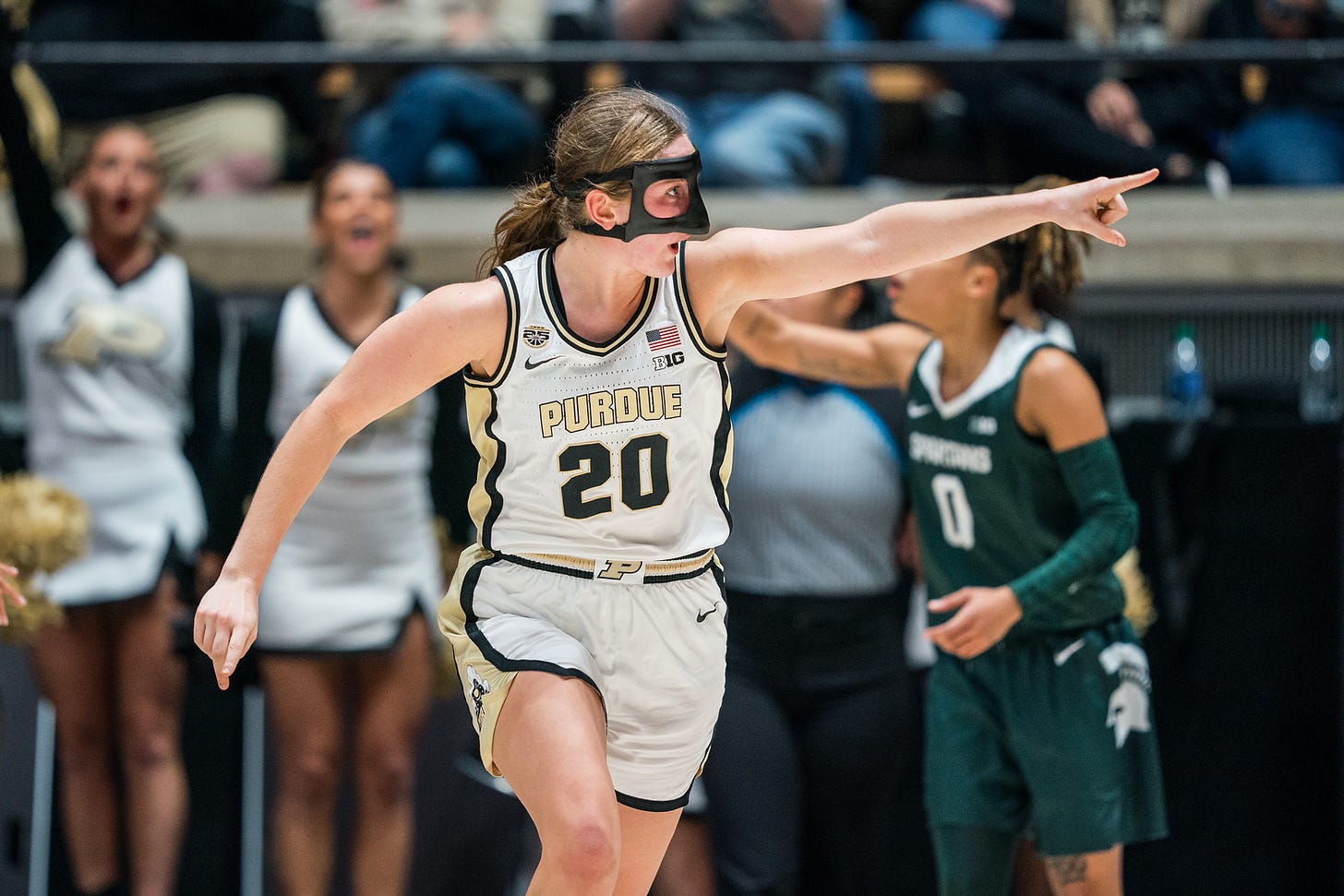Purdue women's basketball report: Mary Ashley Stevenson, WNBA ties, Bluder's retirement at Iowa
Mary Ashley Stevenson finds a new home, Purdue and the WNBA and summing up Lisa Bluder’s career with the Hawkeyes
HEADED WEST
The surprise departure from the program has finally landed at a new school.
Mary Ashley Stevenson, who entered the transfer portal last month in a move that blindsided the coaching staff, announced she’ll attend Stanford.
The Cardinal were the early favorite for last year’s Big Ten Freshman of the Year by the media shortly after she made the decision to leave coach Katie Gearlds’ program.
"What I admire about the Stanford community is its commitment to excellence in everything it does," Stevenson said in a press release issued by Stanford. "That same commitment to excellence is what I seek to embody as a Stanford student-athlete. Plus, its women's basketball team loves to win and so do I."
Stevenson is the second Boilermaker to transfer since the end of the season, joining Emily Monson, who left for Middle Tennessee State. Stevenson will play for first-year coach Kate Paye, who replaced Tara VanDerveer, who retired as the all-time winningest coach in NCAA history.
To demonstrate the sign of the times in college athletics, Stevenson is the third undergraduate transfer in Stanford women’s basketball history. Paye added Santa Clara’s Tess Heal on Monday, but she was the program’s first undergraduate transfer in more than 20 years.
Purdue added four transfers to bring the roster to 14 players heading into the 2024-25 season.

PURDUE/WNBA DROUGHT
As the WNBA begins its 28th season, the Boilermakers have two prominent connections – Stephanie White and Lin Dunn.
White embarks on her second year as the head coach of the Connecticut Sun. Meanwhile, Dunn – who guided the Boilermakers from 1987 through 1996 - is the general manager of the Indiana Fever. Dunn coached the Fever to the WNBA title in 2012. White was Dunn’s assistant at Indiana for four seasons.
But it’s been a decade since a former Purdue player has been part of a WNBA roster during the regular season.
Katie Douglas was a member of the Connecticut Sun during the 2014 season, an organization she spent seven years with before playing for the Indiana Fever. Before that, Lindsay Wisdom-Hylton played for Washington in 2012.
Overall, 12 Boilermakers have been drafted by the WNBA but none since Wisdom-Hylton in 2009.
Purdue had a nice run of players drafted by WNBA teams since it was enjoying success on the court at the college level. But that has changed. For the Boilermakers to compete in the now robust Big Ten and whatever is coming next in college athletics, they’ll need to end that streak.
BLUDER’S INFLUENCE ON BIG TEN
What was Lisa Bluder’s biggest impact on the Big Ten in her 24 years in the conference?
Offense.
Bluder announced her retirement Monday, ending a successful run of scoring points and playing exciting basketball. Caitlin Clark accentuated Bluder’s system with her individual skills to make it shine at a new level during the last four years.
But Bluder’s teams were all about offense before Clark. When Bluder arrived in Iowa City prior to the 2000-01 season, she installed the Triangle Offense, the one made famous by head coach Phil Jackson, assistant coach Tex Winter, and the Chicago Bulls championship teams. Jackson also used the system during his tenure with the Los Angeles Lakers.
Bluder recruited mobile guards who could come off screens and shoot 3-pointers but also drive to the basket and feed off the post players’ ability to pass. She brought in shooters and heady play-making guards who nearly mastered her system halfway through their careers.
Prior to Bluder, the Hawkeyes averaged more than 70 points once in five years under previous head coach Angie Lee, who recruited a boatload of talent to the program, but it was an era of underachievement.
Iowa averaged at least 70 points in 18 of Bluder’s 24 seasons, leading the Big Ten in scoring on several occasions and ranking near the top of the league in assists. The Hawkeyes were always one of the top shooting teams in the league, especially from 3-point range, putting pressure on their opponents to keep up.
Bluder strayed from the Triangle in the mid-2010s, but the system returned once center Megan Gustafson joined the program and reached a new level with Monika Czinano teaming up with Clark to orchestrate one of the top offenses not only in the Big Ten but the country.
Back-to-back national championship game appearances and bringing Clark to Iowa City is at the forefront of what people will remember about Bluder’s career, but her ability to teach and coach offense helped push the Big Ten forward.
While the offensive-first philosophy kept the Hawkeyes in contention for the Big Ten titles, Bluder didn’t advance past the NCAA tournament second round until 15 years into her tenure. The Hawkeyes have traditionally struggled on the defensive end but made enough stops or simply outscored teams to collect enough victories.
No surprise but longtime associate head coach Jan Jensen will take over the program.
• Bluder was Drake’s head coach before taking over at Iowa and parlayed that run into the Iowa job. In 1998, Bluder’s team played at Mackey Arena in the first round of the NCAA tournament. Drake was knocked out by Colorado State and future Hall of Famer Becky Hammon before losing to the Boilermakers in the second round.
• When Bluder entered the league, the Big Ten had 11 schools. That number has grown and will reach 18 starting July 1. How many different head coaches did Bluder go up against during her 24 seasons?
The answer is 39, including five at Indiana, Illinois, Minnesota, and Wisconsin, and three at Purdue (Kristy Curry, Sharon Versyp, and Katie Gearlds).
• Bluder also faced Coquese Washington at two different Big Ten programs (Penn State and Rutgers).



